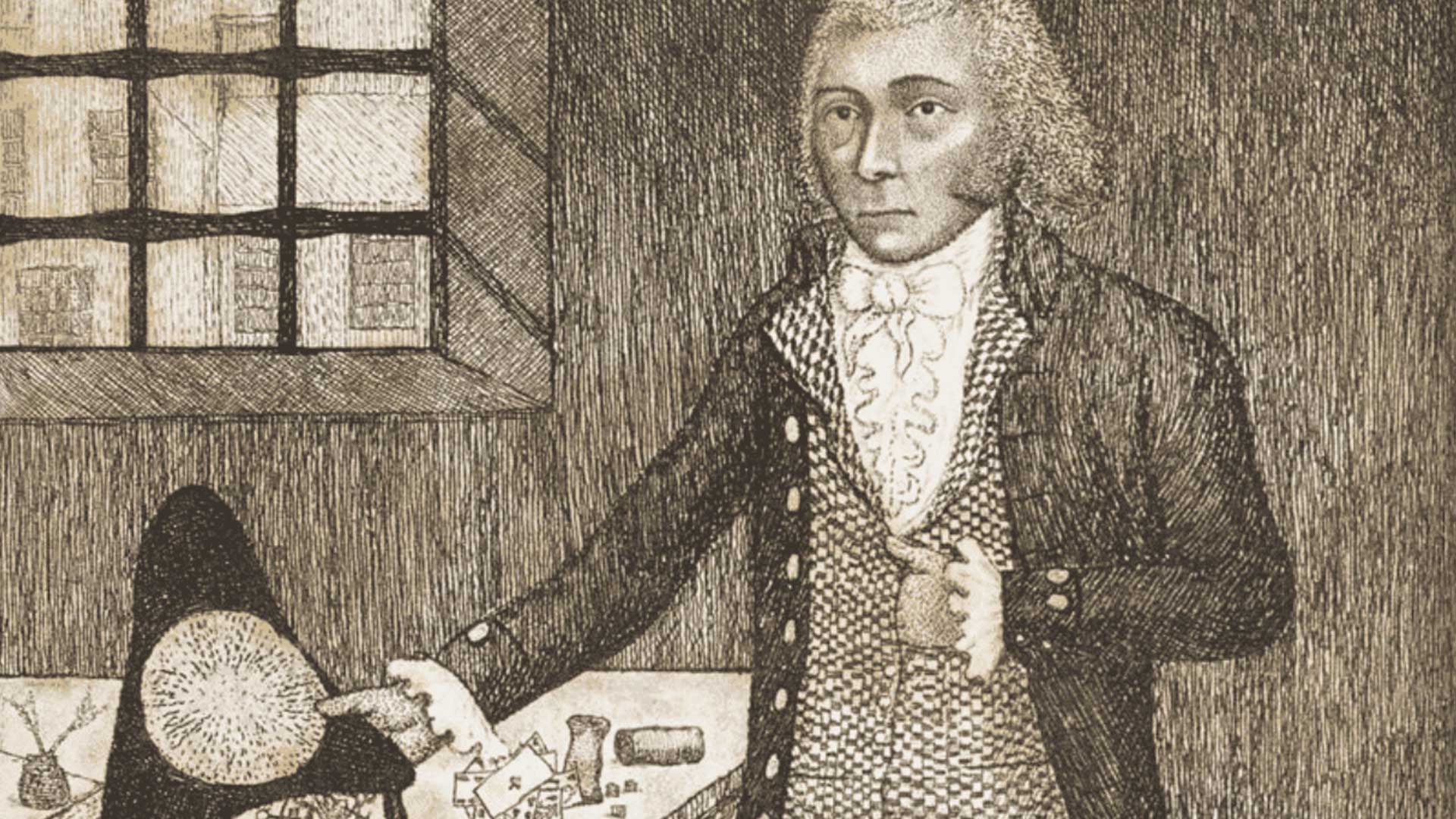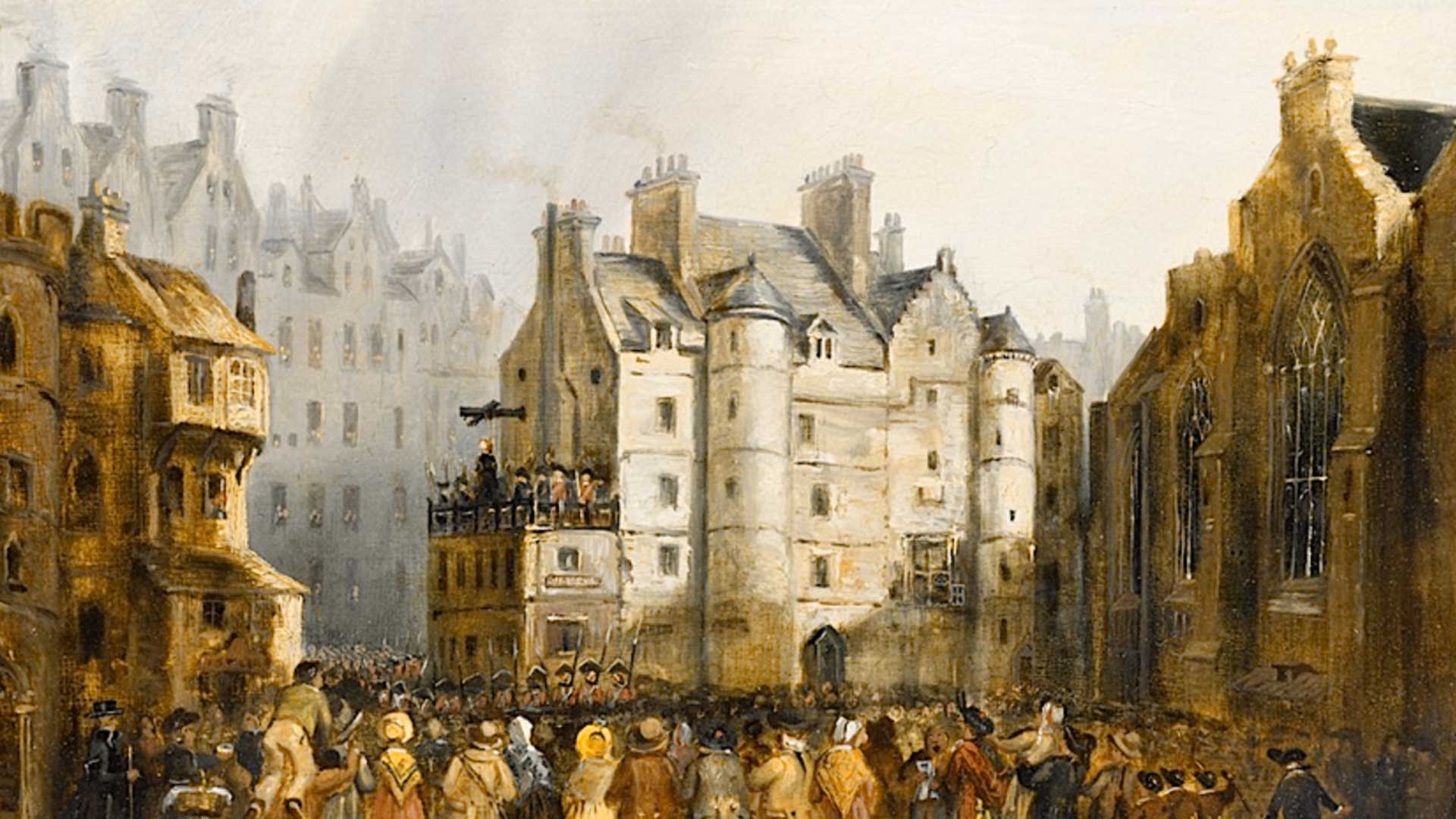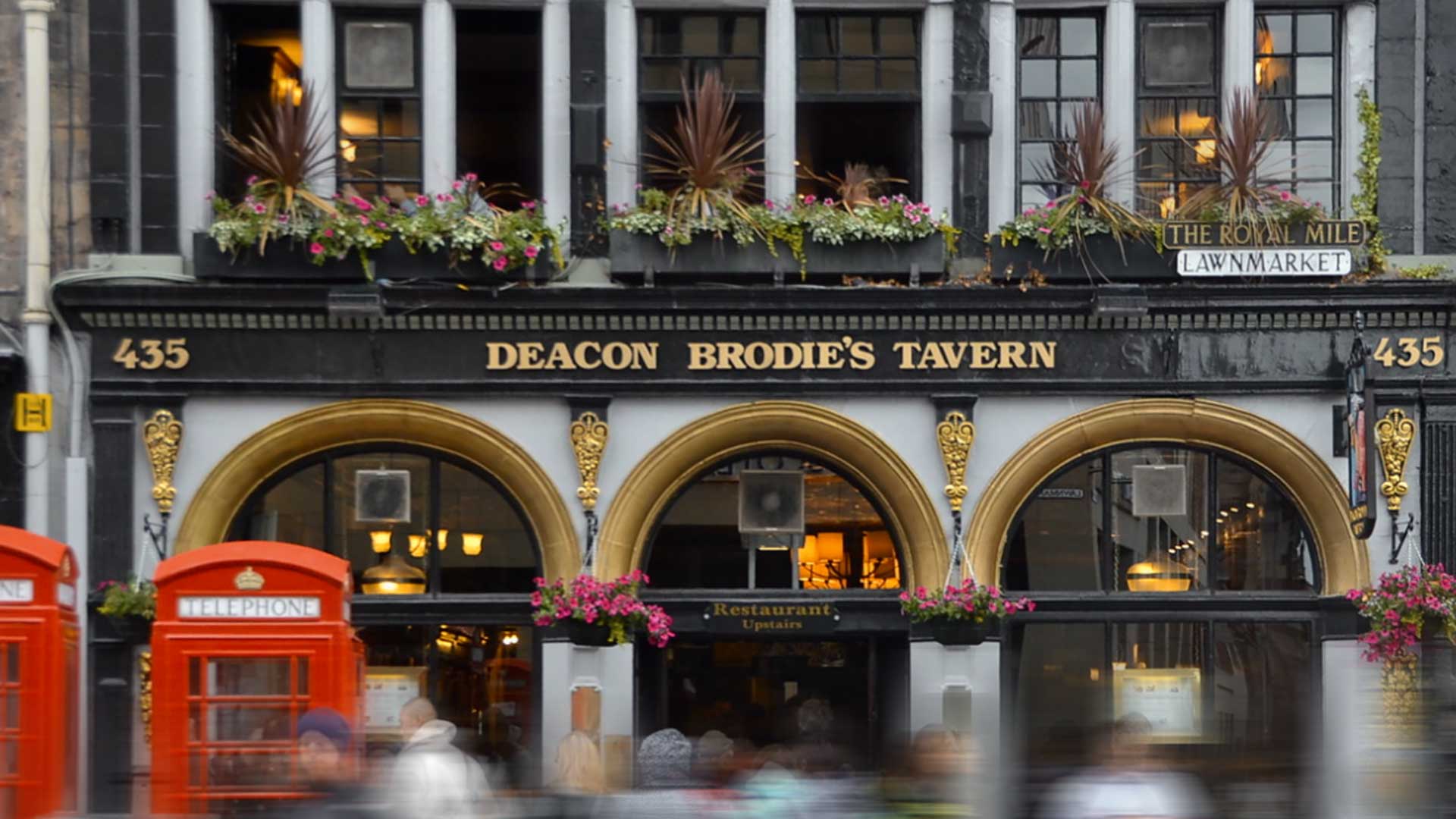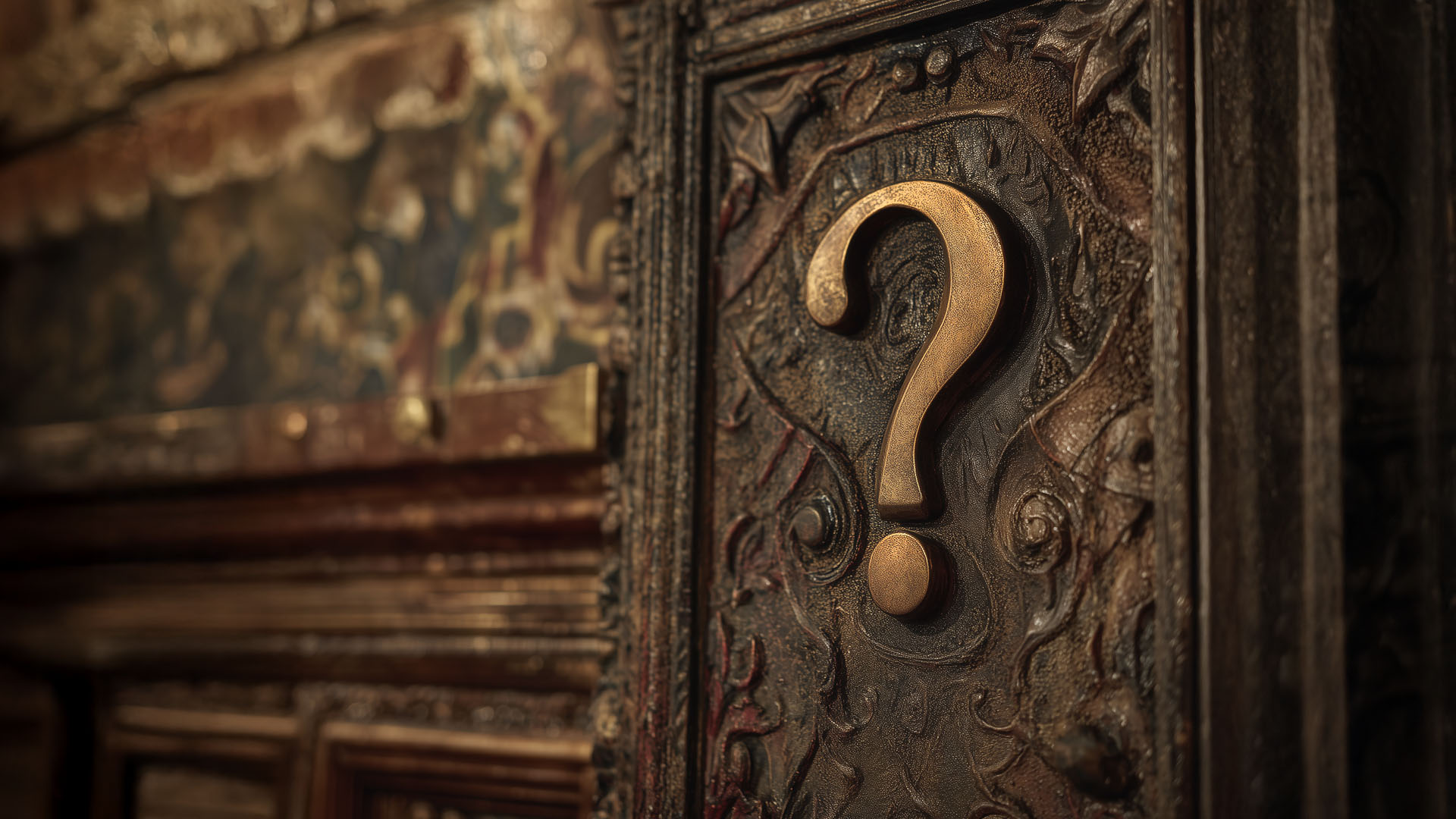Introducing Edinburgh’s Real-life Jekyll & Hyde
Edinburgh’s history is littered with more than its fair share of villains. None, however, are as enigmatic as Deacon Willaim Brodie. His story is a stranger-than-fiction tale filled with irony, contradiction and intrigue.
By day, a respected city councillor, skilled cabinetmaker, and all-round pillar of 18th-century Edinburgh. By night, a scheming gambler and an audacious thief who would eventually meet his end on the very gallows he helped to design!
While many visit Edinburgh having never heard of Deacon Brodie, they have surely heard of the literary villain he inspired – none other than Robert Louis Stevensons’ ‘Dr Jekyll & Mr Hyde’.
Brodie’s is arguably Edinburgh’s favourite villain – and his name can be found attached to several popular landmarks on The Royal Mile. His fascinating story also forms the basis of our historical heist escape room: ‘The Deacon’s Cabinet’.
Read on for everything you need to know about this unique figure from Edinburgh’s past. Or, if reading’s not really your thing, experience his story for yourself!
Respectable Origins
Born in 1741 to a well-respected family on the Lawnmarket (a stone’s throw from Edinburgh castle), Brodie seemed destined for success. His father, Francis Brodie, was a prominent cabinetmaker and a Deacon of the ‘Guild of Wrights, Hammermen and Masons’ - a powerful position in the city’s civic circles.
Following his father’s death, 41-year-old Brodie inherited the family business and his father’s title, in addition to his sizeable wealth equivalent to about £3 million today.
What was a ‘Deacon’ in Old Edinburgh?
In Georgian Edinburgh, a “Deacon” was a civic administrator – without the religious connotations the title often carries.
In Brodie’s case as “Deacon of Wrights” he was the city’s most senior overseer of the carpentry trade - a mark of honour, status, and trust. Brodie rubbed shoulders with the elite, earned lucrative public contracts and commissions from the city’s wealthiest households.
But behind the polished furniture and practiced charm, Brodie was hiding a double life – a nighttime persona fuelled by drink, gambling, debt, and vice.

A Secret Life of Vice
Despite (or perhaps because of) his enviable position, Brodie grew bored of the more gentile side of 19th Century Edinburgh.
As a young man he dreamed of taking to sea as a pirate and he maintained a thirst for danger and excitement which led him to the very depths of the city’s seedy underbelly.
As well as attending clubs and drinking dens befitting his station, Brodie would frequent lower class taverns on the Grassmarket where gambling, cockfighting and prostitution were commonplace.
His voracious appetite for excess extended into his personal life as well, fathering five children by two separate mistresses supposedly unaware of each other’s existence!
The Gentleman Thief
So far so scandalous, but Brodie’s antics eventually took a criminal turn.
To what extent this was due to the financial pressures of gambling debts, a depleting inheritance and two families to keep, as opposed to more Machiavellian motives, remains unclear.
What is clear, is that Brodie had unrivalled access to the homes and businesses of Edinburgh’s wealthiest residents. He decided to craft copies of their keys and return during the dead of night to take whatever he wished.
Over time, Brodie recruited a rag-tag gang of varying levels of competence. Together they robbed safes, tills, and strongboxes and made off with cash, priceless jewellery, fine silks and even a ceremonial mace from the University of Edinburgh!
His targets were selective and meticulously planned, generally avoiding violence or any unnecessary destruction. For Brodie it was about greed, and the thrill of the heist.
To his friends and customers, Brodie remained a model citizen. Few suspected that this councilman was funding his excessive lifestyle with the spoils of his nocturnal adventures.
The Fatal Heist
In 1788, following a crime spree lasting 18 months, Brodie’s secret life finally caught up with him.
Along with a small gang of criminals - George Smith, Andrew Ainslie, and John Brown - he attempted an ambitious armed robbery at the Excise Office in Chessel’s Court on the Canongate. The job was a disaster.
They were seen almost immediately and although disguised, the gang panicked and the plan fell apart. Within days, Edinburgh's authorities were closing in.
Brodie fled the country, hoping to reach America and establish a new life under a false identity, but meanwhile his accomplices had been arrested and it didn’t take them long to turn in their ringleader.
Brodie was caught unceremoniously hiding in a closet in an upstairs room of a lodging house in Amsterdam. He was shipped back to Edinburgh to face trial.
Deacon Brodie’s End: His Trial & Execution
The evidence was damning. Multiple testimonies from his fellow gang-members, a cache of illicit tools and a loaded pistol all pointed to the truth behind Brodie’s venire.
The trial gripped the city. Not just because of the audaciy of the crimes, but because of who had committed them. How could such a respected figure - one of their own who they had trusted implicitly - be capable of such deception? The fact that his final target was the very tax revenues of the people of Edinburgh didn’t provoke much sympathy.
It might be assumed that such a sly and well-connected figure as Brodie could talk (or buy) his way to a more lenient sentence. This was not the case. Such was the outrage in Edinburgh and the sense of betrayal among the city's elites that Brodie found himself with few remaining friends.
After a swift trial, Deacon Brodie was found guilty and sentenced to death.
On October 1st, 1788, William Brodie was hanged at the Old Tolbooth Gallows in front of a crowd of thousands of spectators. Ironically, Brodie himself had supervised improvements to those very gallows in his role on the city council.

…Or Was it The End?
Ever the schemer, many believe Brodie devised a plan to escape death at the gallows. Bribing the hangman, crafting a steel collar and even employing a French doctor to revive him have all been suggested as facets of the plan.
Brodie certainly had an intricate knowledge of the gallows mechanism and a few connections to influential people… Adding to the intrigue, popular myth maintains that when his grave was opened centuries later, it was found to be completely empty…
But such a scheme seems unlikely. Brodie was not a modest man, and had he outsmarted Edinburgh a final time, it’s unlikely he could have avoided gloating about it sooner or later!
What Happened to Brodie’s Fortune?
Brodie was supposedly penniless at the time of his execution. As a condemned man, any assets he did possess would be turned over to the state.
Yet the spoils of many of his crimes were never found… did he have some secret fortune hidden away from the city bailiffs?
This is the conjecture taken by The Deacon’s Cabinet – our historical heist that challenges you to outsmart Deacon Brodie’s in his final attempt at deception!
Did Deacon Brodie inspire Jekyll and Hyde?
Brodie’s life would go on to inspire literature, theatre, and much popular folklore. Most famously, Robert Louis Stevenson, was captivated by Brodie’s story.
As a child in Edinburgh, the Stevenson’s family home had a wardrobe made by Brodie himself. In later life he would write a play about him, and it’s widely believed that Brodie’s tale of outward respectability hiding inner darkness helped shape his classic novel The Strange Case of Dr Jekyll and Mr Hyde, published nearly a century later in 1886.

Brodie's Legend Lives On
Deacon Brodie’s story has become one of Edinburgh’s most infamous cautionary tales - a stark reminder that appearances can be deceiving.
In some ways the duality of Brodie is an apt metaphor for 19th Century Edinburgh itself – good and evil, light and dark, rich and poor co-existing within one dense urban space.
Today, Brodie’s legacy lingers in the very streets he once haunted. Visitors to the Royal Mile can stop at Deacon Brodie’s Tavern, just across from his family home and The Deacon’s Café now occupies the site of his former workshop.
Dive Deeper into Edinburgh’s Hidden Past…
Follow the footsteps of Deacon Brodie and other infamous characters in our award-winning Escape Room experiences.


